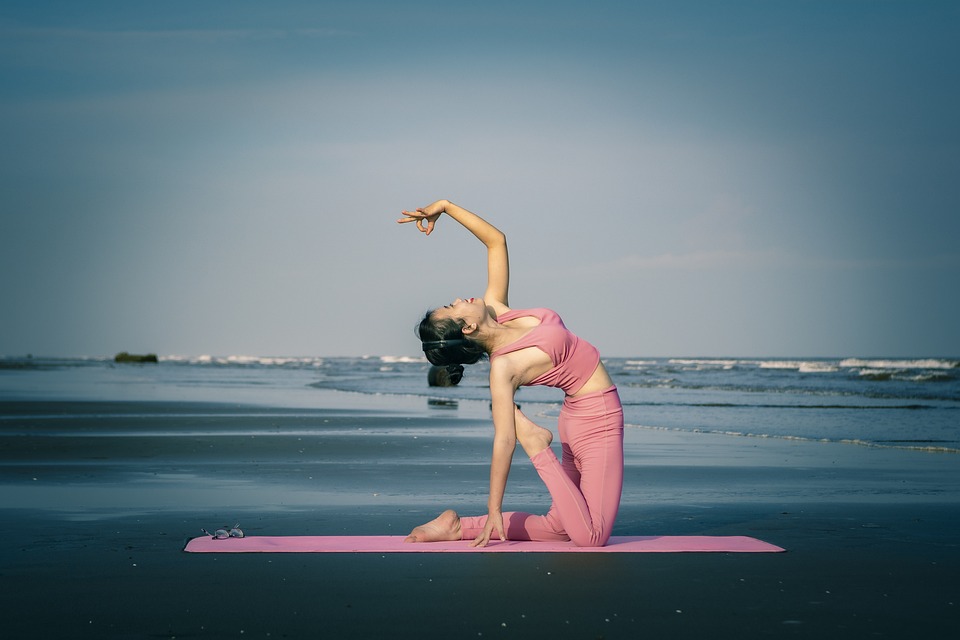From Ashtanga to Vinyasa: Exploring the Different Styles of Yoga and Their Benefits
Yoga is a practice that has been around for thousands of years, originating in ancient India. Over time, various styles of yoga have emerged, each with its own unique focus and benefits. From the dynamic and challenging Ashtanga to the flowing and creative Vinyasa, there is a style of yoga to suit every individual’s needs and preferences. In this article, we will explore some of the most popular styles of yoga and delve into the benefits they offer to practitioners.
Ashtanga Yoga
Ashtanga yoga is a dynamic and physically challenging style of yoga that follows a specific sequence of postures. Each posture flows seamlessly into the next, creating a continuous and rhythmic practice. Ashtanga yoga is known for its focus on breath, movement, and concentration. It is often practiced in a heated room to promote detoxification and flexibility.
One of the key benefits of Ashtanga yoga is its ability to build strength and endurance. The repetitive nature of the practice helps to tone the muscles and increase cardiovascular fitness. Additionally, Ashtanga yoga is a powerful tool for improving mental focus and discipline. The synchronized breathing and movement patterns require practitioners to stay present and focused throughout the practice.
Vinyasa Yoga
Vinyasa yoga, also known as flow yoga, is a creative and fluid style of yoga that links breath with movement. In Vinyasa yoga, postures are sequenced to create a dynamic and flowing practice. The emphasis is on connecting breath with movement to create a moving meditation.
One of the main benefits of Vinyasa yoga is its ability to improve flexibility and mobility. The continuous movement and flowing sequences help to gently stretch and open the body. Vinyasa yoga also helps to build strength and balance, as practitioners move through a variety of postures that engage different muscle groups.
Hatha Yoga
Hatha yoga is a traditional style of yoga that focuses on alignment and balance. In Hatha yoga, postures are held for longer periods of time, allowing practitioners to deepen their awareness and understanding of their bodies. Hatha yoga is a gentle and accessible style of yoga that is suitable for all levels of practitioners.
One of the key benefits of Hatha yoga is its ability to improve posture and alignment. The focus on proper alignment helps to prevent injuries and promote healthy movement patterns. Hatha yoga also helps to increase strength and flexibility, as practitioners hold postures that target specific muscle groups.
Kundalini Yoga
Kundalini yoga is a powerful and transformative style of yoga that combines breathwork, movement, and meditation. Kundalini yoga aims to awaken the energy at the base of the spine, known as Kundalini energy, and channel it through the body. This style of yoga is often practiced with eyes closed and a focus on the internal experience.
One of the key benefits of Kundalini yoga is its ability to release stress and tension from the body. The breathwork and meditation techniques used in Kundalini yoga help to calm the mind and promote relaxation. Kundalini yoga also helps to increase energy levels and enhance mental clarity.
Frequently Asked Questions
Q: What style of yoga is best for beginners?
A: Hatha yoga is a great style of yoga for beginners, as it focuses on alignment and is gentle and accessible for all levels of practitioners.
Q: How often should I practice yoga?
A: It is recommended to practice yoga at least 2-3 times per week to experience the benefits of the practice. However, even practicing yoga once a week can be beneficial.
Q: Can I practice different styles of yoga?
A: Yes, you can practice different styles of yoga to explore different aspects of the practice and find what resonates with you the most.
In conclusion, yoga is a diverse and versatile practice that offers a wide range of benefits for the body, mind, and spirit. Whether you prefer the dynamic and challenging Ashtanga or the creative and flowing Vinyasa, there is a style of yoga to suit every individual’s needs and preferences. By exploring the different styles of yoga and finding what resonates with you, you can create a practice that nourishes and supports your overall well-being.










